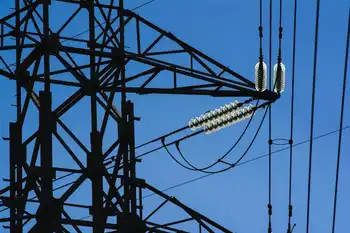Light bulb program has some customers seeing red
OHIO - A plan by a Midwest utility to distribute energy-efficient light bulbs to customers backfired when it was learned that the recipients would not only have to pay for the bulbs, but also pay the utility for the electricity they wouldn't be using.
Ohio's governor sent a letter to regulators who pulled the plug on the program for now, or at least on the charges that caught consumers off guard.
Utilities have been pushing consumers to become more efficient as states set new energy standards. It's not the first time consumers have felt they've been pushed too hard.
Nearly two years ago, Allegheny Power apologized for mailing energy-efficient bulbs to its 220,000 Maryland customers without letting them know they would be footing the bill. Maryland regulators said the company ignored instructions to inform customers about the program.
FirstEnergy's Ohio is now promising to work with the state's Public Service Commission to settle the dustup.
Total planned charges for unsuspecting customers for two light bulbs was $21.60, though it cost only $3.50 to buy and distribute them. To make up the cost plus lost electricity sales, FirstEnergy planned to charge customers using an average amount of electricity 60 cents a month for three years.
FirstEnergy says it will mail or hand-deliver nearly 4 million bulbs over five weeks.
The light bulb distribution program was in response to a state mandate that requires utilities to reduce energy usage by 0.3 percent this year and 22.2 percent by 2025, FirstEnergy said.
The bulbs, known by their twisty, tubular shape, use up to 75 percent less electricity than a traditional incandescent bulb. Customers can save up to $60 over the life of the bulbs, which last much longer than incandescent bulbs, the Akron-based company said.
Other utilities have similar programs, but they usually provide coupons to customers or work with retailers to make discounts or rebates available.
Those programs were rejected by FirstEnergy because they don't bring down energy usage fast enough, company spokeswoman Ellen Raines said.
"We needed to find some proactive way to get bulbs in customers' hands," she said.
Proactive was not how many customers described the program to the state's Public Service Commission, which received about 1,000 calls or e-mails in three days.
Commission Chairman Alan Schriber said that the commission approved FirstEnergy's plan to hand out the bulbs, but not the rate increase.
"They just dropped the ball," he said.
Gov. Ted Strickland asked that the rollout of the program be postponed.
"Ohioans are confused and angry," he said in a letter to Schriber.
Related News

Kenya on Course for $5 Billion Nuclear Plant to Power Industry
KENYA - Kenya’s nuclear agency submitted impact studies for a $5 billion power plant, and said it’s on course to build and start operating the facility in about seven years.
The government plans to expand its nuclear-power capacity fourfold by 2035, the Nuclear Power and Energy Agency said in a report on the National Environment Management Authority’s website. The document is set for public scrutiny before the environmental watchdog can approve it, and pave the way for the project to continue.
President Uhuru Kenyatta wants to ramp up installed generation capacity from 2,712 megawatts as of April to boost manufacturing in East…




